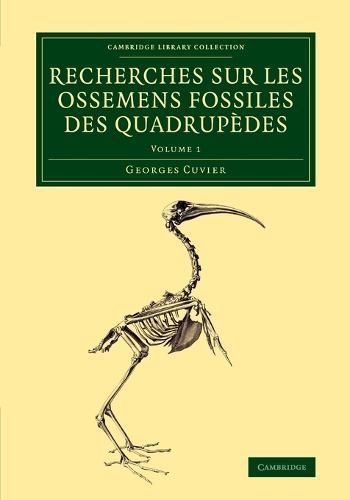Readings Newsletter
Become a Readings Member to make your shopping experience even easier.
Sign in or sign up for free!
You’re not far away from qualifying for FREE standard shipping within Australia
You’ve qualified for FREE standard shipping within Australia
The cart is loading…






Georges Cuvier (1769-1832), one of the founding figures of vertebrate palaeontology, pursued a successful scientific career despite the political upheavals in France during his lifetime. In the 1790s, Cuvier’s work on fossils of large mammals including mammoths enabled him to show that extinction was a scientific fact. In 1812 Cuvier published this collection of his geological and osteological papers, focusing on living and extinct pachyderms, ruminants, horses and pigs. Volume 1 begins with a substantial essay on human origins and the formation of the earth, which was translated into English by Robert Kerr in 1813 (also available). It also includes an essay on the Egyptian ibis mummy brought back from Napoleon’s campaign in Egypt, and an updated version of Cuvier’s influential 1810 geological description of the Paris basin, co-authored with Alexandre Brogniart (1770-1847), which helped establish the principle of faunal succession in rock strata of different ages.
$9.00 standard shipping within Australia
FREE standard shipping within Australia for orders over $100.00
Express & International shipping calculated at checkout
Stock availability can be subject to change without notice. We recommend calling the shop or contacting our online team to check availability of low stock items. Please see our Shopping Online page for more details.
Georges Cuvier (1769-1832), one of the founding figures of vertebrate palaeontology, pursued a successful scientific career despite the political upheavals in France during his lifetime. In the 1790s, Cuvier’s work on fossils of large mammals including mammoths enabled him to show that extinction was a scientific fact. In 1812 Cuvier published this collection of his geological and osteological papers, focusing on living and extinct pachyderms, ruminants, horses and pigs. Volume 1 begins with a substantial essay on human origins and the formation of the earth, which was translated into English by Robert Kerr in 1813 (also available). It also includes an essay on the Egyptian ibis mummy brought back from Napoleon’s campaign in Egypt, and an updated version of Cuvier’s influential 1810 geological description of the Paris basin, co-authored with Alexandre Brogniart (1770-1847), which helped establish the principle of faunal succession in rock strata of different ages.